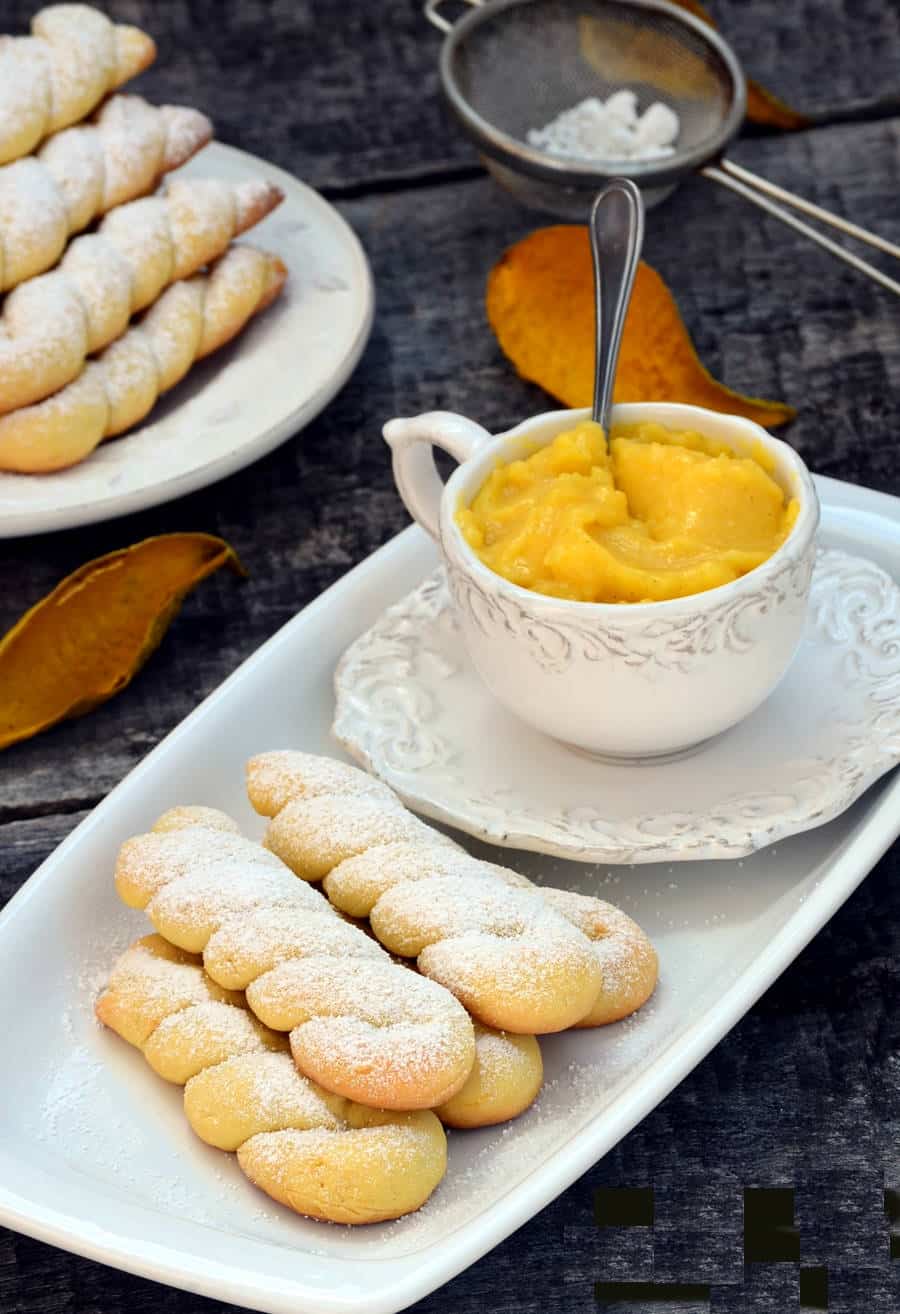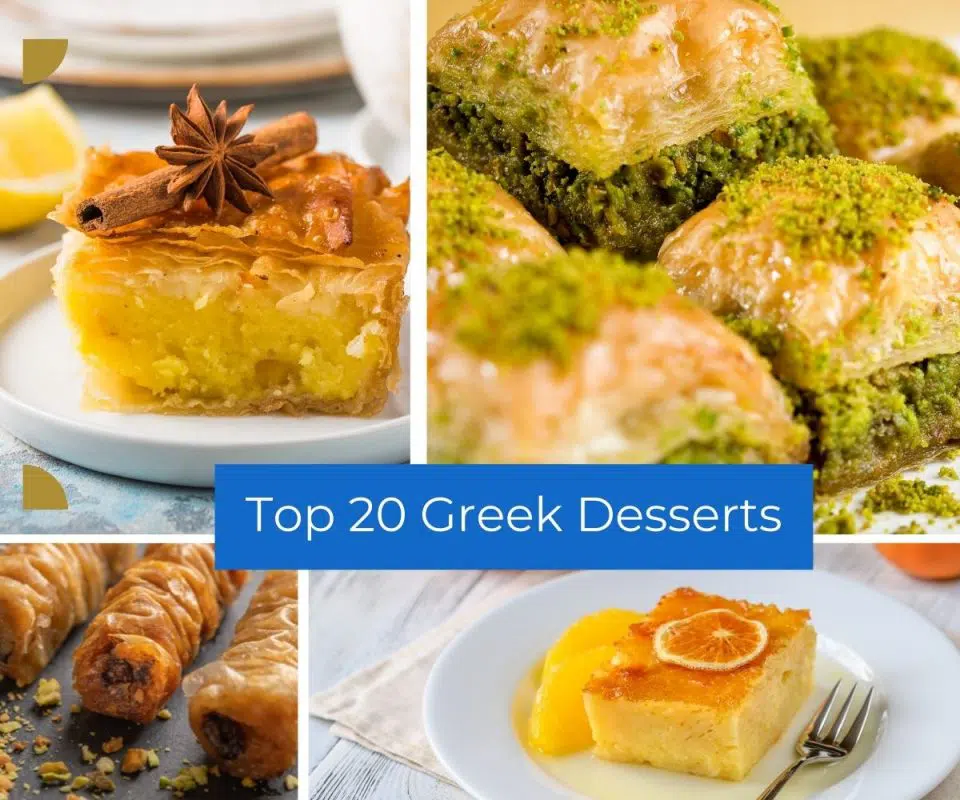The most anticipated and opulently celebrated religious holiday in Greece is Easter, celebrated for 8 full days. Of course, it should come as no surprise that Greek Easter is not complete without its unbelievably palatable menu of traditional foods for you to try.
If you ever consider visiting Greece outside of summer, we highly recommend opting for a springtime trip during the Easter season. You will experience a beautifully devout side of Greece, fragrant with the lemon blossoms of rebirth and the lavender incense of immortality.
The food associated with Greek Easter is both symbolic and delicious, created to bring people together around the table and keep them celebrating for a long, long time. One bite of these dishes will give you a taste of love, warmth, and the pure happiness of eating wholesome food from a unique culture. If the experience of a single morsel making you smile sounds good, read on for a whole selection of festive food that does exactly that.
The multilayered experience of Greek Easter
Greeks associate a lot of meaning with their food. As a country rich in history, traditions, and symbolism, the significance of Greek food comes as no surprise. Eating traditional Easter food on the 8 sacred days is a ritual in itself, connecting observers together through feasts for the commemorative “divine drama” as it is called, or preparing and attending the Easter celebration.
That’s why in truth, Easter begins quite a bit earlier than Easter Sunday – 40 days earlier to be exact. This period, known as Great Lent, is a religious time in which the body and spirit are prepared and cleansed for the forthcoming Easter celebration. It begins with Clean Monday wherein Greeks begin fasting by cutting out certain foods.
During this time, a vegan diet is observed for 40 days for those who are strict about the holiday, or for the last 10 to 15 days leading up to Easter for those with a more casual approach. Going vegan for Lent in Greece is just another way to journey into the culinary delights this country has to offer.
The primary week of the Easter Season has its own protocol for food and preparations, from Palm Sunday all the way to Easter Sunday. On Easter Sunday, the celebration comes to a finale featuring a grand feast representing the various holy events before Jesus’ crucifixion and Resurrection. Celebrations start early and often last until after sundown – and, you guessed it, you will eat practically all day.
Here is a look into what you may eat during the Easter holiday in Greece:
1. Kokkina avga (Red Eggs)

Although there are many shades of dyed eggs available nowadays, the traditional and only color for the Greek Easter table is red. It’s not just any red; deep, blood-red crimson is the ideal egg dye because it symbolizes the blood Christ shed on the cross.
Why an egg? Eggs symbolize regeneration and life. The outer shell, with the hue of spilled blood, is a symbol of death, while the tasty hard-boiled goodness inside denotes life waiting to break out.
That’s also why tradition requires you to break the eggshell by egg-tapping with another person. During the Greek “tsougrisma” game, you crack your friend’s egg with yours (carefully, with pointed tops tapping together or the rounded bottoms tapping together). This custom is meant to “crack” the shell of death so life can emerge, and those with the strongest egg are believed to be blessed with good luck.
Eggs are great appetizers and are eaten together with…
2. Round of Lambri

The Easter round bread, or Round of Lambri (Greek for “shine,” or for the religious observance, “resurrection”) is a large round bread kneaded together with herbs, milk, and oil. There are often intricate decorations with dough topping the bread, with a red egg as a centerpiece.
The round can be savory or sweet and is always eaten together with red-dyed eggs. It also serves as the main bread of the Easter feast. If savory, seasonings will include aniseed or cinnamon. There may also be sesame seeds worked into the dough. If sweet, it will contain honey, mastic, and vanilla.
3. Tsoureki (Greek Sweet Bread)

Easter isn’t complete without tsoureki, which is a special type of sweet bread. It is kneaded into a particularly airy but also stringy dough of a slightly off-yellow color. If made properly, the tsoureki is just the right amount of sweet, full of aromas, and has excellent texture.
It perfectly accompanies your eggs if you are an egg enthusiast – there are camps for or against this in Greece – but even more ideal to pair with your coffee or your milk.
The tsoureki comes in braided loaves or braided rounds and, you guessed it, is further decorated with a red egg.
4. Mageiritsa (Midnight Lamb Soup)

After the midnight mass of Resurrection Saturday, Greeks have their post-midnight dinner that finally breaks their fast and officially ends Lent. This soup is brewed with stock made from lamb’s bone and neck and has a base of fricasseed lettuce with an assortment of herbs.
Chopped lamb liver and entrails complete it for a smooth, fragrant, wholesome meal to prepare you for the following day’s celebration just before bed.
There are many versions of this soup, but they all contain these key ingredients. Vegan or vegetarian versions use heavy vegetable broth from turnips and other roots alongside the fricasseed lettuce base and chopped soy meat or mushrooms for added texture.
5. Ovelias (Lamb on a Spit)

The most iconic food of Easter Sunday is the lamb on a spit. This is a whole lamb that men of the household begin prepping for roasting over an open fire in the yard very early in the morning.
The whole lamb is prepped throughout the previous day with marinades of olive oil, oregano, lemon, and more (the recipe is often unique to each family and kept top secret). This preparation ensures that the lamb is ready to go over the fire as early as possible.
The roasting is done very slowly over several hours. The best lamb is roasted through to the bone and is so tender that you can pick it off without needing a fork or knife. The meat itself is succulent and aromatic thanks to the open fire mixed with herbs and goes great with an array of side dishes.
Much celebration happens around the ritual of roasting the lamb, complete with traditional music, dancing, wine, retsina, ouzo, and side dishes freely circulating.
6. Kokoretsi (Stuffed Lamb Intestines)

Traditional Greek societies never waste anything, and the Easter lamb is no exception. That’s why, together with the lamb on a spit, you get kokoretsi on a spit, too. Kokoretsi is lamb offals wrapped up in meticulously cleaned intestines.
The intestines are turned inside out with a special technique and washed until milk-white with vinegar, lemon, and copious amounts of water. They are then used to secure the offals around the spit.
Kokoretsi is the first roast cooked over an open fire and serves as another overture to the symbolic lamb that is coming. If cooked right (with the men taking bragging rights), it will be served to you in slices like a loaf. The texture is smooth and the taste is lush and rich, enhanced by savory herbs and extra marinading during the cooking process.
7. Spanakopita (Spinach Pie)

While the lamb is roasting, one popular Greek dish that makes the rounds is spinach pie, also known as spanakopita.
Made with traditional phyllo dough, spinach, herbs, and feta cheese, it is crunchy on the outside and soft and juicy on the inside. Though spanakopita is ubiquitous as a food in everyday Greek life, and a favorite Greek Christmas food, the Easter dish is much more luxurious than what you can find from street vendors, so don’t miss out!
8. Greek Potatoes in the Oven

You surely haven’t tasted potatoes as divine as Greek oven potatoes. They are chopped in large or medium chunks, marinated with oil, garlic, and lemon, and cooked slowly in the oven in olive oil. When they are almost ready, they are sprinkled with oregano.
These potatoes melt in the mouth in an explosion of flavor and warmth. They go great with all the Easter roasts and their “gravy” is perfect for dunking your bread in (go on, do it, it’s the Greek way!)
You may occasionally find a clove of garlic that has cooked along with the potatoes. This is a special delicacy, so if you are a garlic lover, make sure to eat the creamy goodness!
In households where roasting on the spit isn’t an option, the lamb goes in the oven together with these potatoes and the resulting dish is simply divine, as all the seasonings blend and the meat absorbs more of the oil. Some Greeks prefer lamb and potatoes in the oven to lamb on a spit for Easter.
9. Giouvetsaki (Lamb in Orzo)

While giouvetsaki can also be made with other types of meat, for Easter it’s likely to be lamb. The tender meat is cooked slowly in olive oil-based tomato sauce. Once it’s almost done and able to be pulled apart without a fork or knife, orzo is added to make a thick, creamy bedding for it.
Orzo is served with ground hard cheese on top, traditionally kefalotyri, but also parmesan. Giouvetsaki is another alternative way to cook lamb for Easter if lamb on a spit is not an option. If you like feta, try it with this dish!
10. Bougiourdi (Baked Feta Cheese)

Bougiourdi (or bouyiourdi) is baked feta with tomatoes, peppers, capers, and olive oil. It is typically baked in the oven, but on Easter Sunday it can easily be wrapped up in tin foil and pushed carefully among the hot coals to roast with the lamb.
When baked, the feta melts into a rich, buttery paste that incorporates all the ingredients and makes for the perfect hot dip for your bread. There are spicy versions made with hot green peppers or mild versions made with sweet green peppers. We recommend trying both, as the spicy version has a perfect balance and the mild version is an ode to merging flavors.
11. Koulourakia (Greek Easter Cookies)

Koulourakia is a delicious traditional Greek dessert that’s widely enjoyed during the Easter festivities. These traditional Greek cookies are very chewy and flavorful, and go perfectly with a cup of milk or for your coffee break.
We’ve listed 10 incredibly tasty Greek foods above but we’ve barely scratched the surface of the sheer variety that can be found on a Greek Easter Sunday table. If you ever receive an invitation to such a celebration, don’t miss out. It’s not only the great food that you’re bound to eat, but the dancing, the singing, and the feeling of being happy together.
Related: 20 Famous Greek Desserts

Related: 10 Traditional Greek Cookies

The post 10 Tasty Greek Easter Foods You Will Fall in Love With appeared first on Chef's Pencil.
from Chef's Pencil https://ift.tt/CbyUMl2
via https://chefsspenncil.blogspot.com

No comments:
Post a Comment